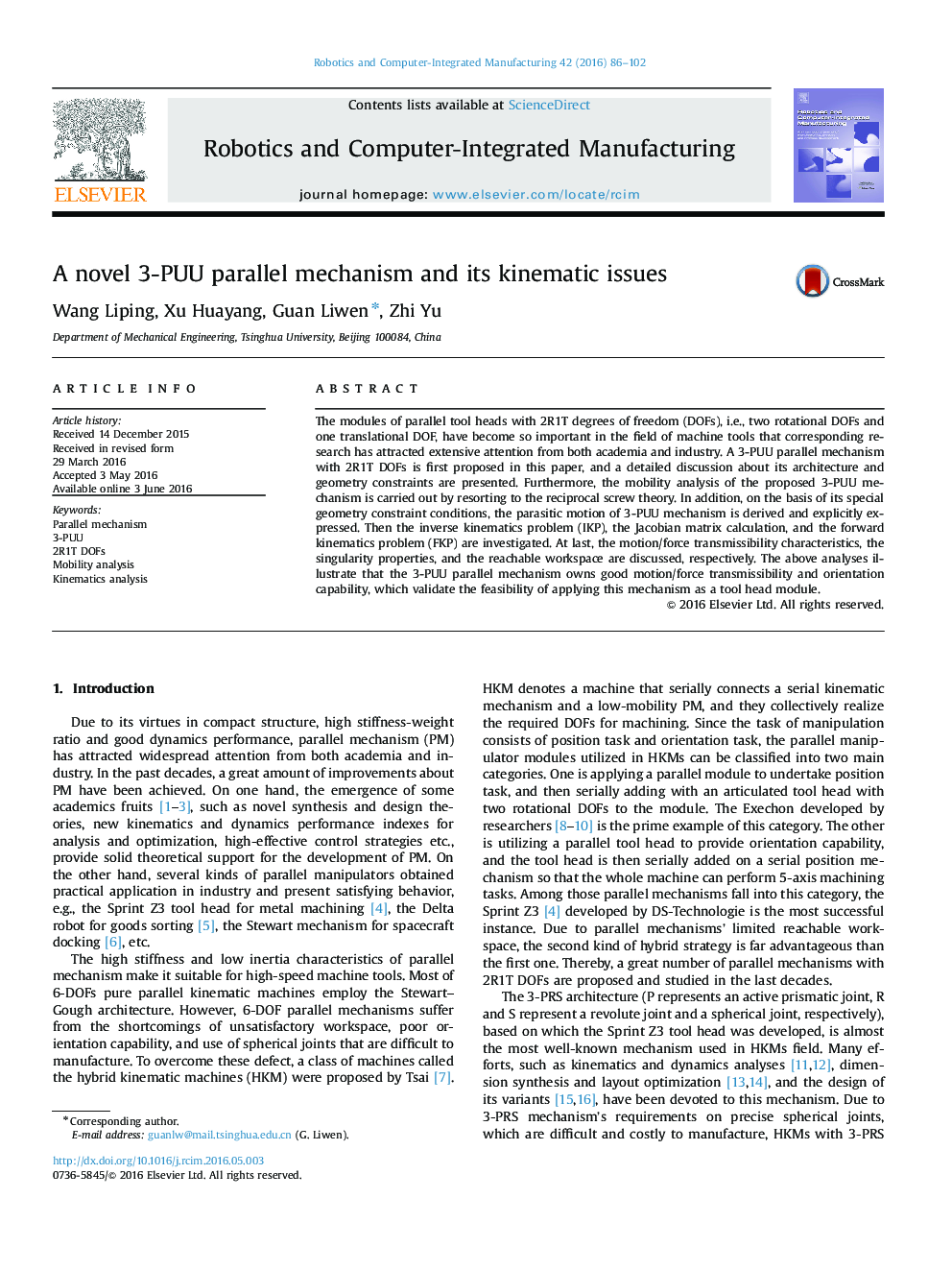| Article ID | Journal | Published Year | Pages | File Type |
|---|---|---|---|---|
| 413925 | Robotics and Computer-Integrated Manufacturing | 2016 | 17 Pages |
•A novel 3-PUU parallel mechanism with 2R1T DOFs is proposed•The mobility for the 3-PUU mechanism with 2R1T DOFs and previous 3-PUU mechanisms with 3T DOFs are compared, which are analyzed by resorting to the reciprocal screw theory.•A detailed discussion about the architecture and geometry constraints of the 3-PUU mechanism are presented, based on which the parasitic motion of 3-PUU mechanism is derived and explicitly expressed.•The analysis of dexterity, singularity and workspace features for the 3-PUU mechanism are respectively figured out, which validate the feasibility of applying this mechanism as a tool head module.
The modules of parallel tool heads with 2R1T degrees of freedom (DOFs), i.e., two rotational DOFs and one translational DOF, have become so important in the field of machine tools that corresponding research has attracted extensive attention from both academia and industry. A 3-PUU parallel mechanism with 2R1T DOFs is first proposed in this paper, and a detailed discussion about its architecture and geometry constraints are presented. Furthermore, the mobility analysis of the proposed 3-PUU mechanism is carried out by resorting to the reciprocal screw theory. In addition, on the basis of its special geometry constraint conditions, the parasitic motion of 3-PUU mechanism is derived and explicitly expressed. Then the inverse kinematics problem (IKP), the Jacobian matrix calculation, and the forward kinematics problem (FKP) are investigated. At last, the motion/force transmissibility characteristics, the singularity properties, and the reachable workspace are discussed, respectively. The above analyses illustrate that the 3-PUU parallel mechanism owns good motion/force transmissibility and orientation capability, which validate the feasibility of applying this mechanism as a tool head module.
